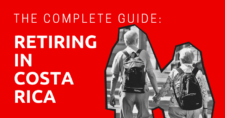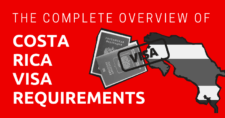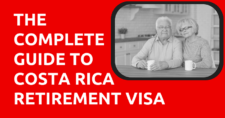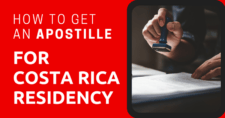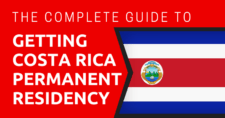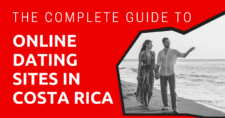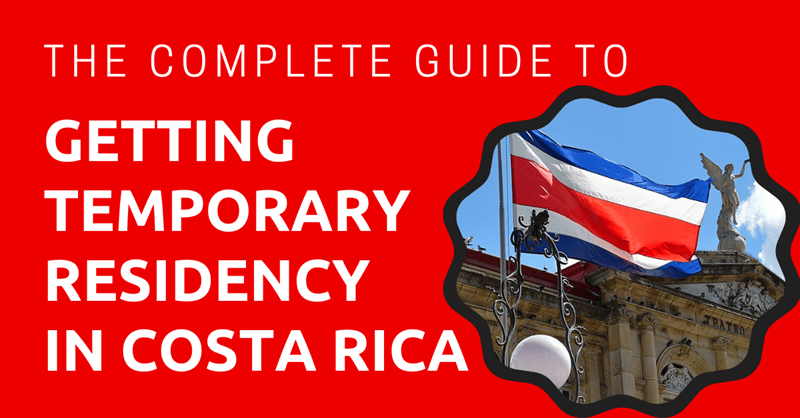
If you are planning to stay in Costa Rica for more than 180 days a year, you need to obtain temporary residency.
This is done through the Costa Rican Department of Immigration (Dirección General de Migración y Extranjería) once you are in the country.
In this article, you will learn about how to obtain temporary residency status in Costa Rica, including options, required documents, application process, cost, benefits, limitations, and some practical tips from those who have experience with the process.
This article will take approximately 17 minutes to read. Don't have the time right now? No worries. You can email the ad-free version of the article to yourself and read it later!
Disclaimer: This article may include links to products or services offered by ExpatDen’s partners, which give us commissions when you click on them. Although this may influence how they appear in the text, we only recommend solutions that we would use in your situation. Read more in our Advertising Disclosure.
Contents
Types of Residency Status
There are two types of residency status for those who want to move to Costa Rica.
- Temporary: You will apply for temporary residency first. Once granted, the duration is two years, after which it must be renewed. While temporary residency allows one to live and enjoy most benefits of Costa Rican citizens, it does not permit legal employment without a work permit (a separate legal process that is often cumbersome).
- Permanent: After three years of temporary residency, you may apply for permanent residency. Permanent residents may work legally in the country.
This article is going to solely focus on temporary residency.
Requirements
There are many temporary residency categories in Costa Rica. Each category has its own requirements, in addition to those required of all applicants.
Let’s look at a popular one.

Pensionado (Retiree)
The Pensionado option is mainly for those who wish to retire in Costa Rica.
- Requires proof of US $1,000 per month income from a permanent pension source or retirement fund. This can be social security or a lifelong pension from a company.
- Requires a visit to Costa Rica at least once a year. The duration is not specified.
- Can claim a spouse and dependents under 18 years of age. Dependents can be designated as residents under your application but must meet all requirements individually.
- Does not permit employment. Does allow owning a company and receiving dividends.
Related article: The Complete Guide to Costa Rica Retirement Visa
Rentista
The Rentista option is mainly for self-employed, freelancers, and remote workers who want to live in Costa Rica.
- Requires proof of at least US $2,500 per month income for at least two years, guaranteed by a banking institution, OR a US $60,000 deposit in an approved Costa Rican bank. One amount covers the family. Requires a visit to Costa Rica at least once a year. The duration is not specified.
- Can claim a spouse and dependents under 18 years of age with all family members providing the necessary documentation.
- Does not permit employment.
- Does allow owning a company and receiving dividends.
Investor
The Investor option is mainly for anyone who wants to make an investment in Costa Rica.
- Must provide proof of an investment of US $200,000 in a business or property.
- Must visit Costa Rica at least once a year. The duration is not specified.
- Can claim a spouse and dependents under 18 years of age. All dependents must submit individual documentation.
- Does allow receiving income from the project.
- Does allow owning a company and receiving dividends.
Marriage
If you marry a Costa Rican, this is your option.
- Must provide proof of marriage to a Costa Rican citizen.
- The spouse of a Costa Rican will need to submit the following to the Department of Immigration:
- A letter in Spanish requesting permanent residency and stating the reason, along with the applicant’s full name, passport number, current address in Costa Rica, and email address. The letter should also include the full name and cedula number (national identity) of the Costa Rican spouse. This letter must be signed by the applicant in the presence of an immigration official or authenticated by a Costa Rican lawyer.
- Proof of payment of $50 US to Banco de Costa Rica account #242480-0 with a notation indicating a request for temporary residency.
- Proof of payment of $200 US or the equivalent in Costa Rican colones at the day’s exchange rate to account #242480-0 at Banco de Costa Rica.
- Marriage certificate (apostilled if outside Costa Rica) duly registered with the Civil Registry of Costa Rica.
- Attend personal interviews (both the applicant and spouse) with immigration officials to verify the validity of the marriage.
Documentation Required for Temporary Residency
There is considerable paperwork and documentation that not only needs to be submitted but also translated and apostilled.
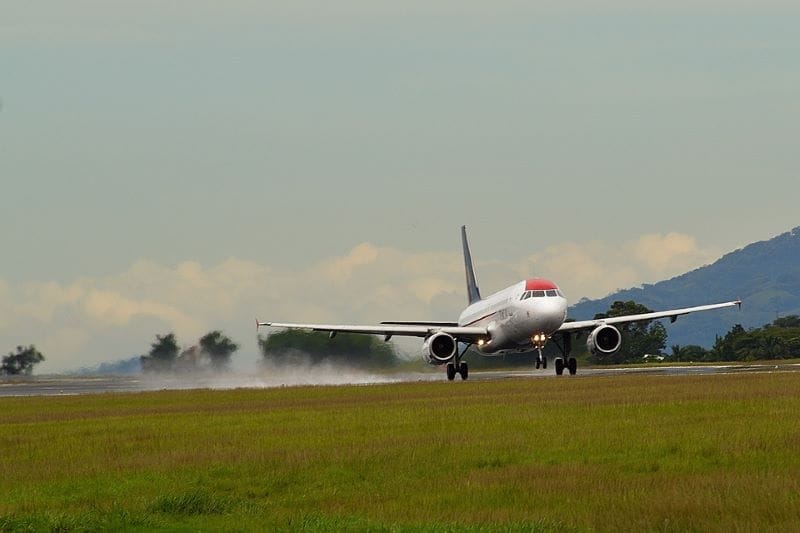
Remember, any document that is not in Spanish must be translated by an official translator before being presented to the Department of Immigration.
Temporary Residency Request Letter
Present a letter in Spanish requesting temporary residency and stating the reason, along with the applicant’s full name, passport number, current address in Costa Rica, and email address.
The letter should be signed in the presence of a notary or lawyer.
Birth Certificate: Secure a copy of your birth certificate from the state where you were born. This is usually done by contacting vital statistics for the state.
Once received, have the birth certificate apostilled.
This can be done by online services or within Costa Rica once you arrive by an immigration service that offers apostilling of documents.
Marriage Certificate
Secure a copy of your marriage certificate if a married couple is applying.
This is usually accomplished by contacting the county offices of the county in which you were married.
The marriage certificate will need to be apostilled.
Proof of Income
You need to prepare a proof of income based on your temporary residency option.
If applying through the pensionado category
This can be in the form of an official letter from the pension program or company, or, in the case of United States social security, it can be obtained from the United States Embassy Consular Section in Costa Rica.
If the income is from a bank or financial institution, then that institution must issue the letter. Only the income of the husband or wife is necessary, not both. This document will need to be apostilled.
My personal tip is that you should use whatever pension you have that is the smallest amount per month of at least $1,000.
If you don’t have any pension other than Social Security from the US, you will need to use that one.
I had a smaller one from a company that was for $1,100 per month.
By using that, my wife and I saved a lot on our monthly “caja” bill, the amount we pay for access to the free public health care system.
If applying through the investment category
Secure proof of investment in property ($200,000 minimum) or a business in Costa Rica.
This can be the legal purchase documents or documentation from the civil registry.
Please note that a bill is presently being considered by the legislature that would reduce the investment amount to $150,000, but at the time of publication (February 2024), the bill has not been approved and signed into law.
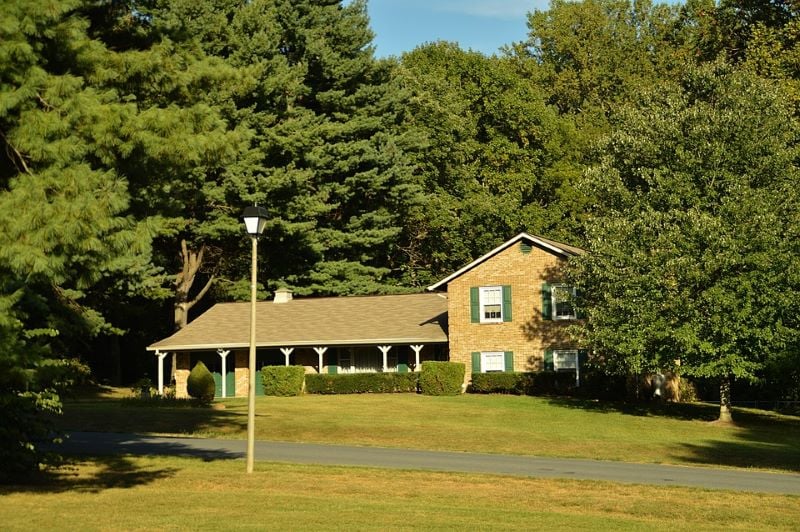
If applying under the rentista category
Secure proof of a monthly income of $2,500 for two years verified by a banking institution OR proof of a deposit of $60,000 in a Costa Rican bank account.
A letter from the banking institution should suffice, as long as a deposit slip or account statement showing the bank deposit of $60,000 is included.
Criminal Record: Request a criminal record from your home country or the country in which you have lived during the last three years.
For example, if coming from the United States, you can get a report from the United States Federal Bureau of Investigation (FBI Report).
This will need to be apostilled.
Passport Copies
Make copies of the principal pages of your passport as well as the page showing your latest entry stamp into Costa Rica.
In the case that you come from a country that requires a visa to enter Costa Rica, you will need to provide a copy of the page showing the visa.
Proof of Payment
Make a payment of $200 US or the equivalent in Costa Rican colones at the exchange rate of the day into account #242480-0 of the Bank of Costa Rica.
This deposit must be made in the name of the foreign applicant. Keep the deposit slip for submission to Immigration.
An Apostille
Any public document you receive in Costa Rica must be apostilled or legalized by the Consul of Costa Rica in your country. An apostille certifies the document(s), so the document can be recognized in foreign countries that are members of the 1961 Hague Convention Treaty.
How to Apply by Yourself Step-by-Step
If you are in Costa Rica, once you have all documents translated and apostilled, call the Immigration Call Center #1311 and request an appointment to present all your documents.
You may want to have someone with you who speaks Spanish as you make this call. Be sure you have everything complete at the time of the appointment.
If you are outside Costa Rica, you can apply at the Department of Immigration through the Costa Rican Consulate in your country of origin.
Generally, the Department of Immigration will only receive applications that are accompanied by ALL the supporting documentation.
Keep in mind that all the original documents you submit become the exclusive property of the Department of Immigration and will NOT be returned to you.
Wait for the DIMEX Card
Things move slowly in the Department of Immigration, so it is usually a wait of six months to a year or more before the residency application is approved and you have your DIMEX identity card and access to the public health system.
Patience is necessary, and applying it often makes it easier to go through the process.
Practical Tips from One with Experience
My own experience, as well as the experiences of many friends, have resulted in the following ideas which should be helpful as you navigate the residency process.
Some of these also come from an immigration attorney in Costa Rica.
Use an Immigration Lawyer If You Cannot Speak Spanish
The application process is complicated and can be very challenging if you are a limited Spanish speaker or do not speak Spanish at all.
It is also more difficult to accomplish if you are not living in San José.
Pay the fees for a professional to take you through the process.
Otherwise, you will be fraught with frustration and delays.
When you find an immigration lawyer, you should ask around to see who people recommend who have gone through the process. Ask about the timeframe, what exactly is included, efficiency, knowledge, etc.
Don’t just look one up on Facebook or on the internet.
Most immigration lawyers or services will charge anywhere from $2,500 to $4,000 US to take you completely through the process.
There will be additional charges for apostilling documents and securing fingerprints. (Some lawyers or services include apostilling in their fees.)
Be sure to clarify exactly what services are included.
Spanish translation is usually provided by the lawyer or immigration service.
Collect All the Documents before Applying
If you know for sure that you are going to apply for temporary residency when you arrive in Costa Rica, do everything you can to bring the documents with you.
If that isn’t possible, then secure them after you arrive as quickly as possible.
Benefits of Obtaining Temporary Residency
There are some definite benefits and advantages to having residency status. These are important for people planning to live or spend significant time in Costa Rica each year.
Access to the Public Health System
For many United States expats, this is an important benefit due to the high cost of medical care in the United States.
All legal residents have access to free medical care in a public hospital for a reasonable monthly payment (ours combined is $115 for husband and wife).
The monthly amount depends on the category you are applying through; for retirees, it is based on the amount of pension you report on your application.
Please note that Caja payments, while very cheap compared to medical insurance rates in the United States, are increasing, so ask your immigration lawyer’s advice on how to make the most of your situation since the cost of Caja will be calculated based on your income.
Live in Costa Rica Continuously: Residents do not have to leave the country every 180 days as they did when they were tourists (or until recently, every 90 days).
As a resident with legal rights, you enter the country the same as a citizen with no limit to how many days you can be in the country.
Related article: Health Insurance for Expats in Costa Rica: What You Need to Know
DIMEX Identity Card
You have the convenience of a national identity. The DIMEX is a national identity card with your photo that allows you to complete every process a citizen can, except vote.
There’s quite a bit of bureaucracy to life in Costa Rica, and it can be a huge hurdle when you’re not a resident.
Even the seemingly simple things, like opening a bank account, setting up utilities, or buying a cell phone line can all be more challenging without residency.
As a legal resident, you also have the option to obtain a “firma digital,” or digital signature, which makes daily life even easier.
Get a Costa Rica Driver’s License
Only legal residents or citizens can obtain a Costa Rica driver’s license which allows you to drive in Costa Rica without any time limitations.
If you are on a tourist visa, you can drive on your own country’s driver’s license for 90 days at present.
It is expected and hoped that this will be extended to match the new 180-day tourist visa, but at the time of publication, it is still 90 days, which means you would need to leave the country and re-enter at 90 days if you want to continue to drive legally.
Residence Discounts
Many, if not most, tourist destinations in Costa Rica offer discount entry to locals and residents. For example, it costs $16 US for a tourist to enter Manuel Antonio National Park, while it costs a citizen or resident only about $3 US.
Path to Permanent Resident
After you have had temporary residency for three years, you can upgrade to permanent residency, which allows you to stay in Costa Rica indefinitely.
Related article: The Complete Guide to Getting Costa Rica Permanent Residency (2024)
Renewing Temporary Residency
It is easy to renew temporary residency in Costa Rica. The whole process is similar to when you first applied.
However, if you are not a Spanish speaker, it is still a good idea to use an immigration lawyer, or at least, a trusted bilingual friend who can accompany you during the renewal process.
You can renew your temporary residency at the Department of Immigration or at selected branches of Banco de Costa Rica.
Here’s what you need to do to renew your temporary residency.
Gather the Required Documents
Here’s the document you need:
- Current DIMEX card
- Proof of latest Caja payment (must be up to date)
- Passport.
Based on your type of temporary residency, here’s what you need:
Pensionado
You need to get a proof of the continued pension. It can be a letter from the company, institution, or bank that distributes the pension.
For example, US retirees who receive a pension from social security can obtain a letter from the Federal Benefits Office at the U.S. Embassy in San Jose, confirming the amount of the monthly social security payment.
This letter can be obtained by making an appointment at the embassy or requesting it online at https://cr.usembassy.gov/u-s-citizen-services/social-security/.
Rentista
You need to get a bank certification indicating that you have maintained your monthly, stable, and permanent income as required during the initial application.
If the funds come from abroad, you also need to get a bank certification, stating that the funds have entered the country through a transfer to Banco Nacional on a monthly, consistent, and permanent basis for the corresponding amount.
Investor
You need to get a proof of the continued investment in the country (property or business ownership).
Spouse of a Costa Rican
For renewing as a spouse of a Costa Rican, you must demonstrate marital cohabitation, for which you and your spouse must appear at the Department of Immigration office or the corresponding regional office.
There will be an interview in which questions about the couple’s cohabitation and your life together. You may also need to provide other evidence to prove that you are living together as a married couple.
A declaration stating cohabitation must be signed by both spouses.
Get a Proof of Deposit
You should get a proof of deposit of the required amount into account #242480-0 at Banco de Costa Rica.
If you carry out the renewal process at a Banco de Costa Rica branch, you should not pay in advance as you will pay at the bank at the time of renewal.
If you renew at the Department of Immigration, you will need to pay in advance. The amount to be paid must be consulted at the time of making the renewal appointment, as this amount varies depending on the case.
Make a Renewal Appointment
This can be done at the Department of Immigration by calling 1311 at the Immigration Call Center or at Banco de Costa Rica by calling 800-227-2482.
Visit the Immigration Office
Attend the appointment at the scheduled time with all the required documentation.
A new photo will be taken for the DIMEX card, documentation will be reviewed, and the payment will be made or proof of previous deposit accepted.
After that, you should wait until you receive notice that your renewed DIMEX card is ready. Pick it up at the appointed location and time.


